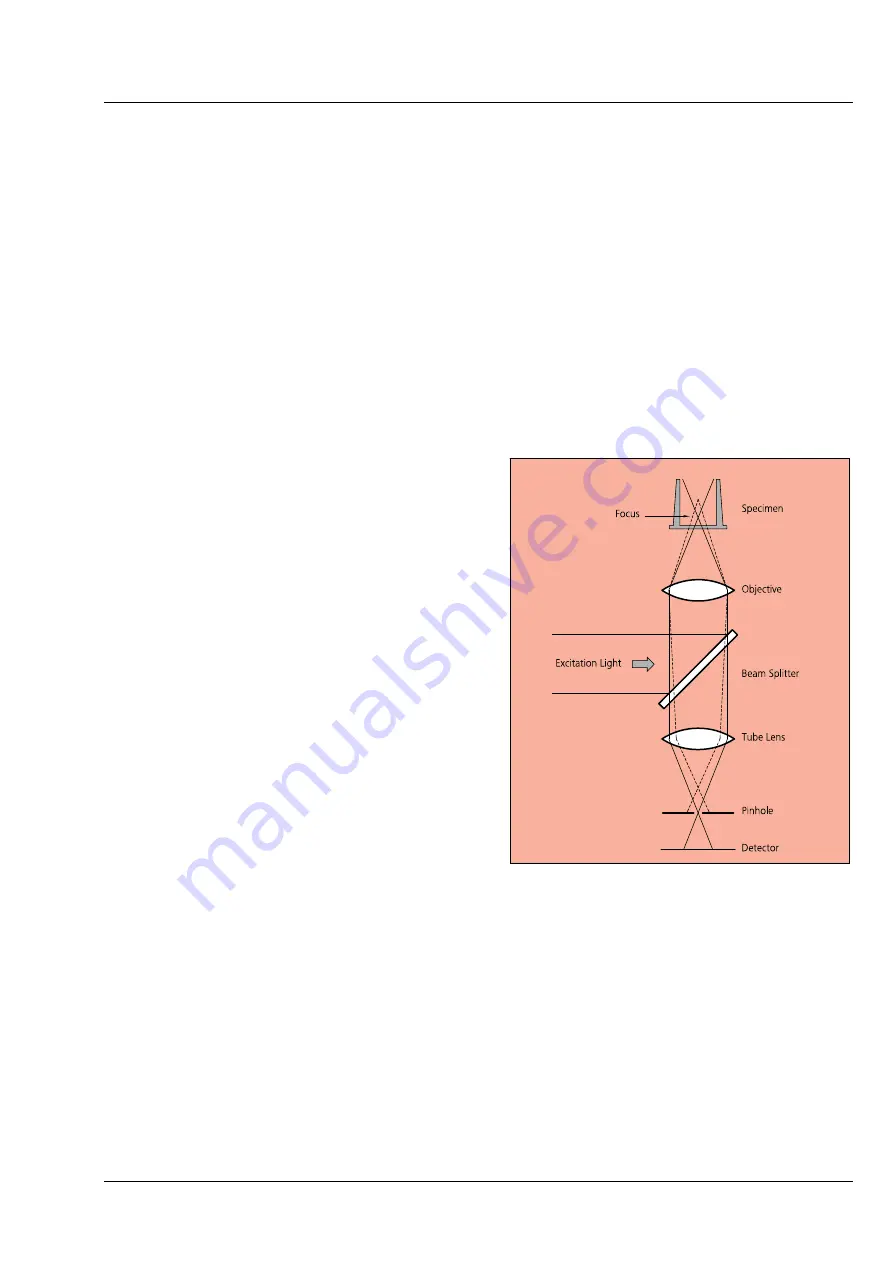
CONFOCOR
3
ConfoCor 3
Introduction to Laser Scanning Microscopy and Fluorescence …
Carl Zeiss
02/2010 M60-1-0025
e
3
9
CONFOCOR 3
9.1
Principle of Laser Scanning Microscopy
To yield information on their inner structure by conventional transmitted-light microscopy, specimens
have to be very thin and translucent; otherwise image definition will be poor. In many cases it is a
problem to satisfy these requirements.
The essential considerations have led to trailblazing changes in conventional microscopy and supplied a
successful solution to the above problem.
−
Unlike the practice of even illumination in conventional microscopy, the LSM technique projects the
light of a point light source (a laser) through a high-NA objective onto a certain object plane of
interest as a nearly diffraction-limited focus. However, if not for another "trick", the stray light
produced outside the object plane, or the fluorescence of fluorescent specimens, would disturb the
in-focus image of object point of interest, resulting in a blurred image of poor contrast. The
problem therefore is how to capture only the light coming immediately from the object point in
focus, while obstructing the light coming from out-of-focus areas of the specimen.
−
The light reflected, or the fluorescence light
produced, at the focus of the high-NA
objective is projected onto a variable pinhole
diaphragm by the same objective and a tube
lens. The focus inside the specimen and the
pinhole are situated at optically conjugate
points (
confocal imaging
). The decisive
advantage of this arrangement is the fact
that essentially no other light than that
coming from the object plane of interest can
pass the narrow pinhole and be registered by
a detector. Unwanted light coming from
other specimen areas is focused outside the
pinhole, which passes only a small fraction of
it. The smaller the pinhole, the less stray light
or fluorescence from out-of-focus areas will
get on the detector. The image point thus
generated is largely free from blur caused by
unwanted light.
−
In order to obtain an image of the selected
object plane as a whole, it is necessary to
scan the object plane in a point-by-point,
line-by-line raster by means of an XY light
deflection system. The detectors - as a rule,
photomultipliers - convert the optical information into electric signals. This allows the image of any
object plane to be generated and stored within less than a second. By a defined focusing (Z axis)
movement it is possible to look at any object plane of interest. By scanning a succession of object
planes in a specimen, a stack of slice images can be produced.
This way, the LSM technique in conjunction with ICS optics (Infinity Color-Corrected System) has brought
decisive improvements over conventional microscopy in terms of resolving power and confocal depth contrast:
Object features in the order of 0.2 µm can be resolved, and height differences of less than
0.1 µm made visible, without the use of interference methods.
Fig. 1
Principle of confocal imaging
















































